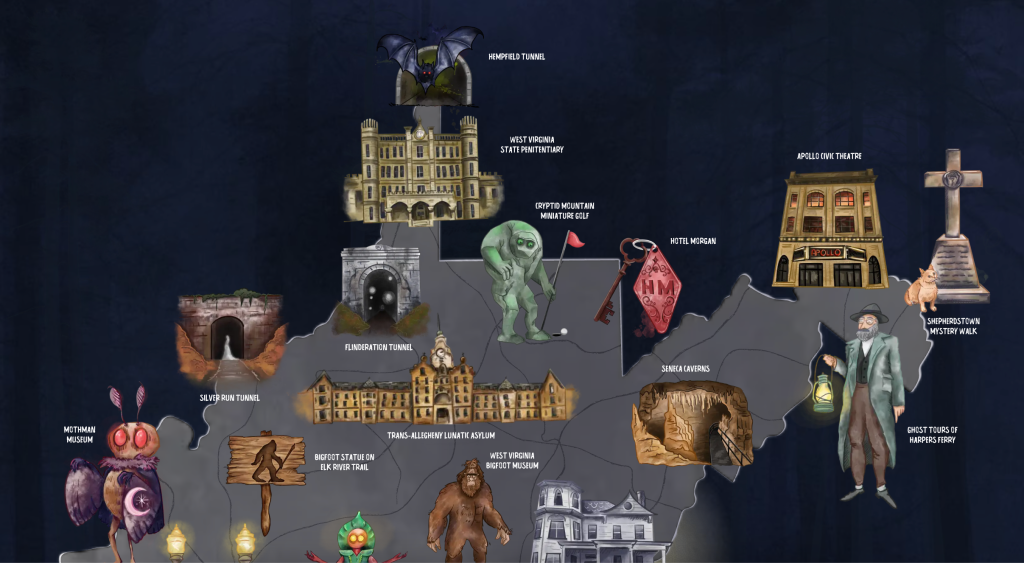Most Americans could probably list a few facts about Oktoberfest.
First, it comes from Germany. Second, it involves a lot of beer and large drinking halls. Third, there’s lederhosen involved. Fourth, the event takes place in October.
But what is Oktober in Munich like in real life? And what else does the average traveler need to know about Oktoberfest—especially if their vacation coincides with the famous drinking festival?
Consider this your crash course on Oktoberfest in Munich, which runs this year from September 20th through October 5th.
Oktoberfest: origins
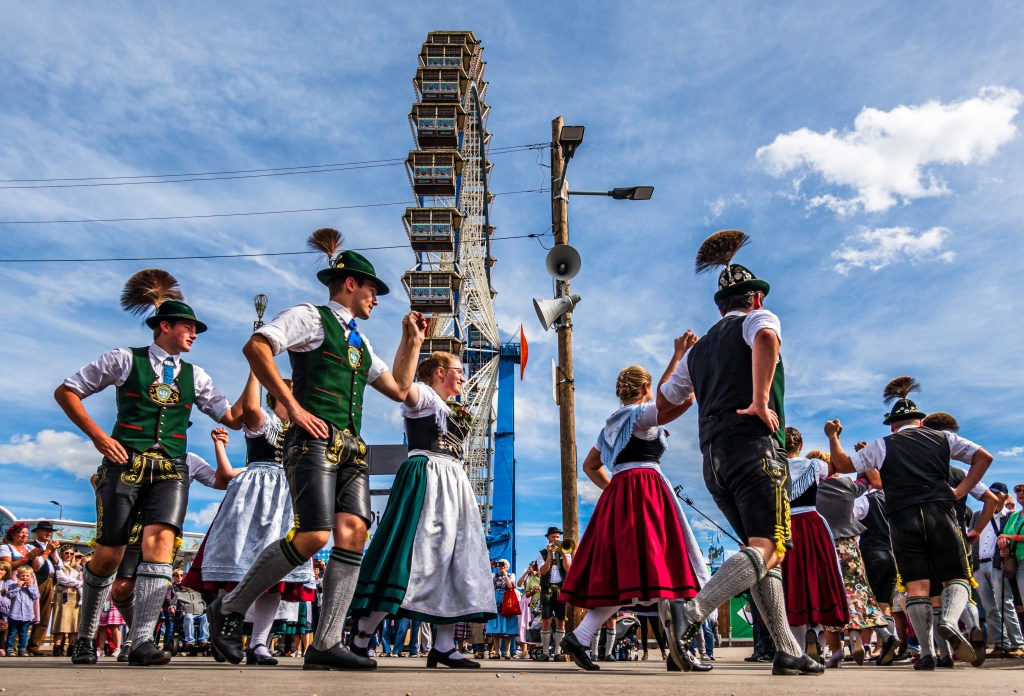
This year’s Oktoberfest will be the 190th Oktoberfest held in Munich. Though Oktoberfest events take place around the country (and the world), Munich in Germany’s southern state of Bavaria is where it all began. It’s also where the most intense and lively celebrations are held.
Oktoberfest is a ‘volkfest’, which is German for a folk festival. In Germany, these involve amusement rides, games, and large halls made for drinking beer (or wine) and eating. I like to think we’re familiar with this setup in the United States, on par with harvest festivals and even parish celebrations.
The original Oktoberfest dates back to a marriage between Crown Prince Ludwig of Bavaria and his bride in 1810. Ludwig invited the whole town of Munich to celebrate outside the city walls. For the first two years, the main event was a horse race, which drew tens of thousands of spectators in the coming years.
In fact, locals in Munich still call Oktoberfest by ‘d’Wiesn’, which is a callback to the fields where this original celebration was held. It was named after Ludwig’s wife, Therese, and called Theresenwiese. That got shortened to d’Wiesn.
Slowly but surely, the gathering evolved. By 1880, electricity illuminated the booths and tents, letting revelers stay longer and drink more. By 1887, there was a brewery parade involved, which quickly became a theme. In 1900, large beer halls replaced the small booths. By 1910, revelers consumed around 120,000 liters of beer; in 2024, that number reached seven million liters.
Somewhere around the turn of the century, the name Oktoberfest took over. But don’t forget: anyone born in Munich probably calls it d’Wiesn or the Wiesn. Now, onto the fun stuff—what is Oktoberfest in Munich like today?
What is Oktoberfest in Munich like? 10 things to know
Oktoberfest is held on the same grounds as the original 1810 celebration
Like I just outlined, locals call Oktoberfest the Wiesn thanks to its location. Oktoberfest is located on the same grounds as the very first festival thrown in 1810—and that area of Munich, though no longer a meadow-like field, is still known as Theresienwiese. And, though not quite as idyllic as the early 19th century, it is still an open field.
Oktoberfest has been held on the same grounds for the last 190 years. Two other large-scale events take place at Theresienwiese, including the winter festival called Tollwood and an annual flea market.
Only beer brewed inside Munich is sold—and only two types
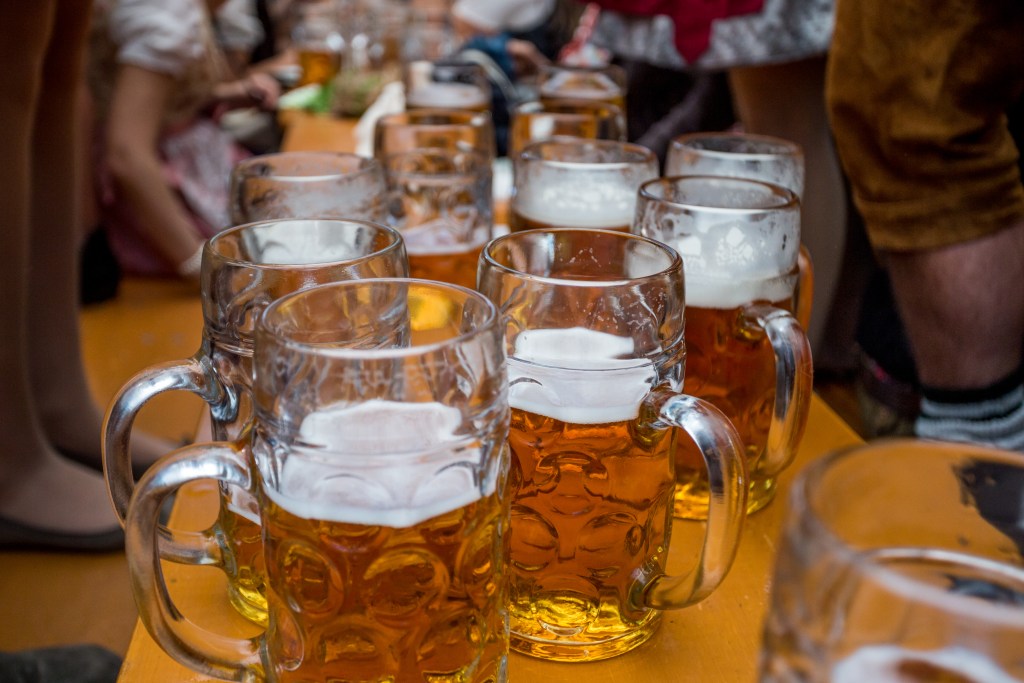
Back in 1516, a series of regulations related to beer and how its brewed were officially adopted in Bavaria, known as the Reinheitsgebot. To this day, beers served at Oktoberfest must meet the traditional, historic standards adopted during the Middle Ages.
Additionally, beers must be brewed inside Munich city limits and must come in one of two styles: Marzen lager (the historical standard) or Festbier (paler and seasonal). As of 2025, only six breweries in Munich have the trademark for Oktoberfest Beer and can serve their beers at the festival.
These are: Augustiner Brau, Hacker-Pschorr, Lowenbrau, Paulaner, Spaten, and Hofbrau Munchen.
There’s an opening parade that’s led by the Mayor of Munich—and there are floats
Oktoberfest kicks off each year with a grand opening parade, which was first launched in 1887 before evolving over the next decades. The current program has been in place since 1950 and is led by the Mayor of Munich. There are elaborate horse-drawn carriages (think: Budweiser style), along with grand floats from folk groups that will perform at the festival, along with restaurateurs and brewers.
There’s also a costume parade
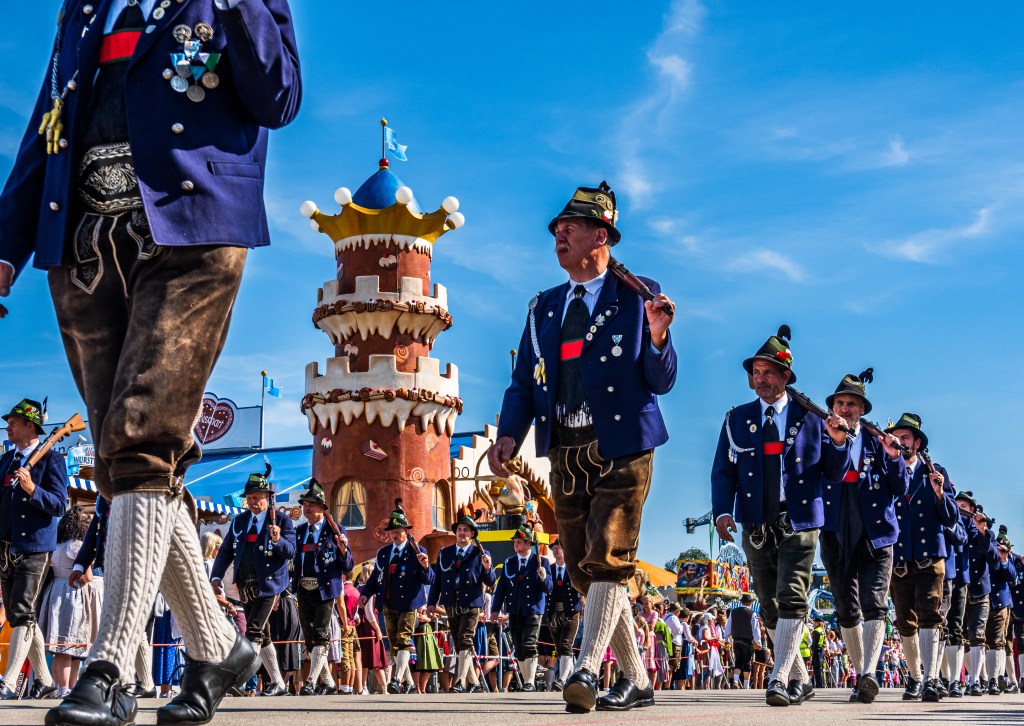
Similar to the opening parade, the costume parade has slowly evolved since its original inception in 1835. Starting in the late 1800s, it became more popular for costume groups to join in the thousands. Costume groups are similar to today’s Ren Fair participants, who enjoy dressing up in historically accurate folk clothes.
Today, the costume parade is a great place to see traditional lederhosen, along with other styles you might recognize from Germany and the Alps, such as dirndl. You can watch the costume parade on the first Sunday that Oktoberfest starts; participants march over four miles from the Munich palace building to the festival grounds.
Steinholding is Oktoberfest’s unofficial sport
Steinholding is a type of sport in which competitors strive to be the last one holding up a one-liter dimpled glass full of beer. They can’t bend their arms, either. At Oktoberfest, this is called Masskrugstemmen.
There are 14 large tents, and each can sit thousands
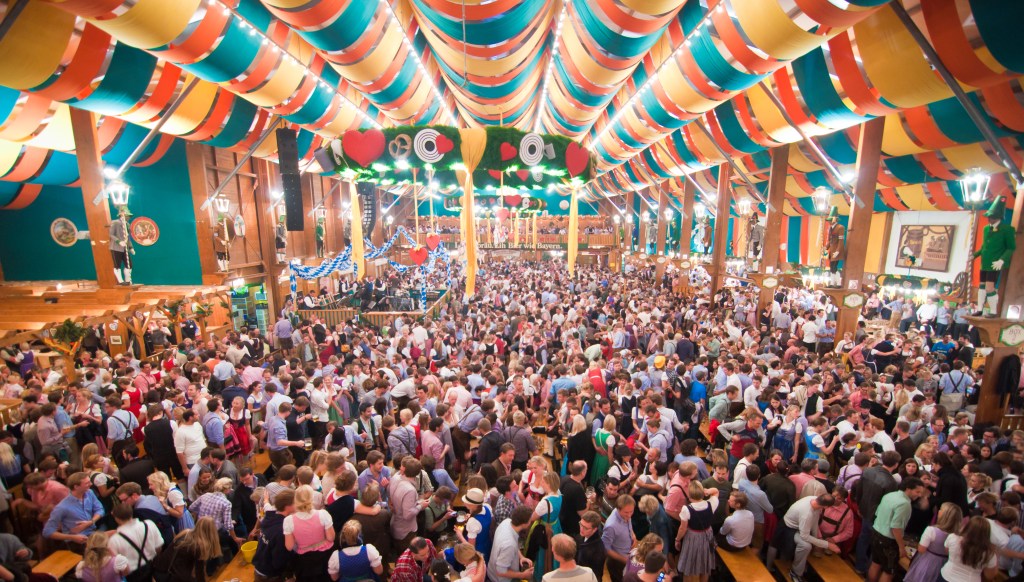
Because Oktoberfest takes place at Theresienwiese, which has limited space, it’s a finely worked puzzle involving large and small tents. There are 20 small tents that hold up to 500 revelers. There are 14 large tents, and some hold almost 8,000 drinkers.
Each tent has its own legacy and history. Some are popular for their food stalls, while others are popular for their performances and wild décor. Unsurprisingly, you need to land a lottery if you want to book a table in one of the large tents.
There was a zoo on the grounds
Though not a traditional zoo, Oktoberfest had an animal tent and a racecourse. It was managed by the Bavarian Farmers’ Association, along with the local Hellabrun Zoo. However, in 2010, animal welfare groups stepped in to help ban animals on the grounds. In the past, there were races, trained dog shows, and similar spectacles.
Grilled fish is one of the traditional fares
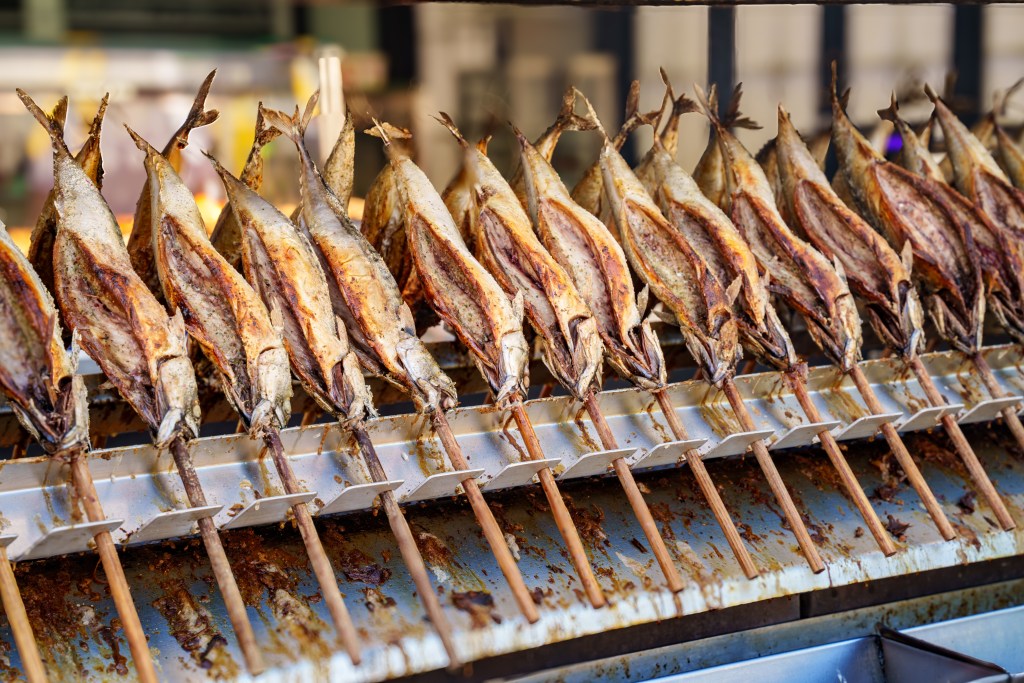
If you make it to Oktoberfest in Munich, you’ll notice plenty of roasted meats. But there’s another specialty called Steckerlfisch, which is grilled fish on a stick. Usually, its trout, char, or mackerel, but it has traditionally been made from Coregonus or common bream.
There’s a Gay Oktoberfest that runs concurrently
Throughout the sixteen-day festival, attendees can also enjoy Rosa Wiesn, or Gay Oktoberfest. These are LGBT-focused events that are scheduled throughout the main festival, including the main event of Gay Sunday on the first Sunday of the festival. It takes place in the Braursol tent and draws around 8,000 visitors each year.
You can livestream the event from home
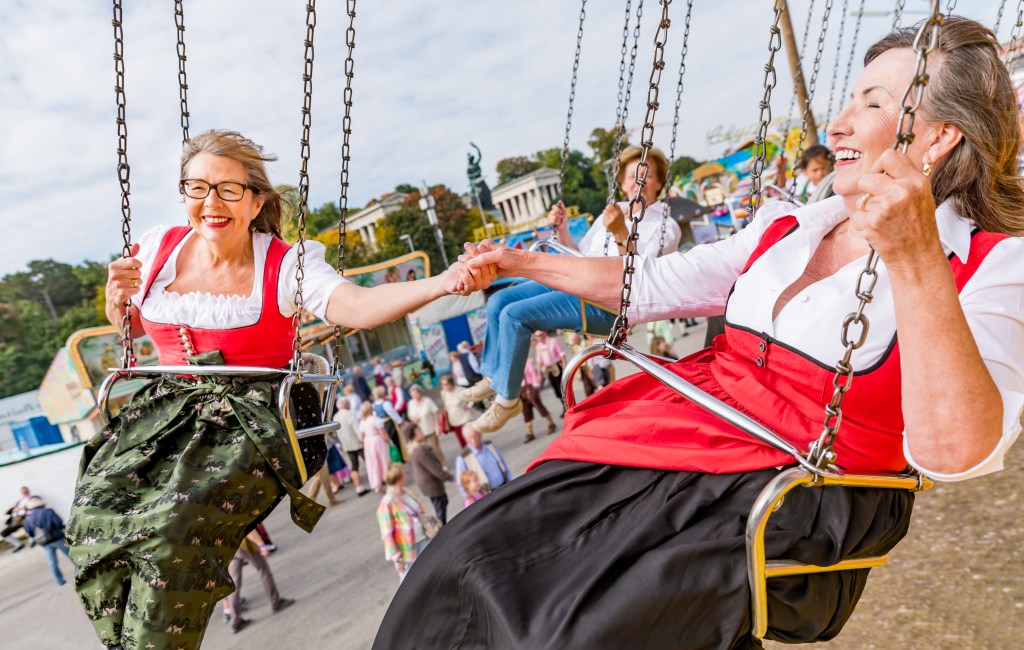
So, what is Oktoberfest in Munich like? Despite giving you a rundown of the event’s history and modern makeup, there’s only one way to truly answer that question: visit Munich during Oktoberfest or livestream the antics from home. That’s right—Oktoberfest has an official live stream on its website, and it’s already streaming as the festival slowly takes shape.
